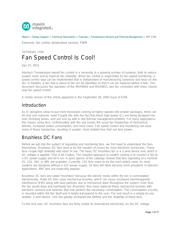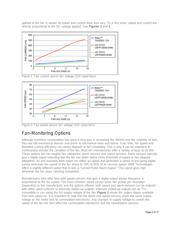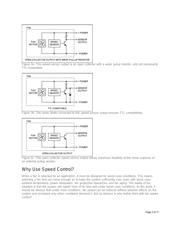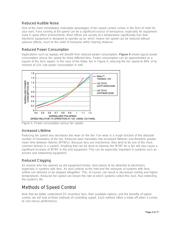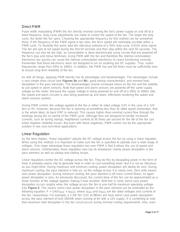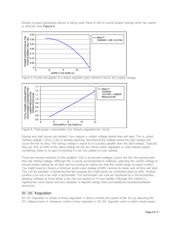Datasheet 搜索 > 接口芯片 > Maxim Integrated(美信) > MAX4051AEEE+T 数据手册 > MAX4051AEEE+T 其他数据使用手册 1/17 页
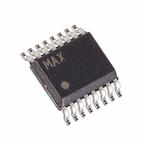
 器件3D模型
器件3D模型¥ 25.815
MAX4051AEEE+T 其他数据使用手册 - Maxim Integrated(美信)
制造商:
Maxim Integrated(美信)
分类:
接口芯片
封装:
SSOP-16
Pictures:
3D模型
符号图
焊盘图
引脚图
产品图
页面导航:
应用领域在P4P8
导航目录
MAX4051AEEE+T数据手册
Page:
of 17 Go
若手册格式错乱,请下载阅览PDF原文件

Maxim > Design Support > Technical Documents > Tutorials > Temperature Sensors and Thermal Management > APP 1784
Keywords: fan control, temperature sensors, PWM
TUTORIAL 1784
Fan Speed Control Is Cool!
Apr 27, 2011
Abstract: Temperature-based fan control is a necessity in a growing number of systems, both to reduce
system noise and to improve fan reliability. When fan control is augmented by fan-speed monitoring, a
speed-control loop can be implemented that is independent of manufacturing variances and wear on the
fan. In addition, a fan that is about to fail can be identified so that it can be replaced before it fails. This
document discusses the operation of the MAX6650 and MAX6651, two fan controllers with linear closed-
loop fan speed control.
A similar version of this article appeared in the September 28, 2000 issue of EDN.
Introduction
As IC designers strive to put more transistors running at higher speeds into smaller packages, there can
be only one outcome: heat! Couple this with the fact that these high-power ICs are being designed into
ever-shrinking boxes, and you end up with a real thermal management problem. For many applications,
this means using fans. Unfortunately with fan use comes the usual fan headaches of mechanical
failures, increased power consumption, and more noise. Fan speed control and monitoring can ease
some of these headaches, resulting in quieter, more reliable fans that use less power.
Brushless DC Fans
Before we get into the subject of regulating and monitoring fans, we first need to understand the fans
themselves. Brushless DC fans tend to be the solution of choice for most electronic enclosures. These
fans couple high reliability with ease of use. The basic DC brushless fan is a 2-wire device over which a
DC voltage is applied. That is all it takes. The simplest approach to system cooling is to connect a fan to
a DC power supply and let it run. A quick glance at fan catalogs reveals that fans operating at a nominal
5V, 12V, 24V, or 48V are available. Currently, 12V fans seem to be the most widely used. As more
systems are designed without a 12V power supply, 5V fans will likely become more prevalent. In telecom
applications, 48V fans are especially popular.
Brushless DC fans are called "brushless" because the electric motor within the fan is commutated
electronically. Older DC fans used mechanical brushes, which can cause increased electromagnetic
interference (EMI) along with dust particles due to mechanical wear throughout the system. Over time,
the fan would wear and eventually fail. Brushless fans have replaced these mechanical brushes with
electronic sensors and switches that now perform the necessary commutation. This commutation circuitry
is mounted within the fan itself and is totally transparent to the user. The end result is a simple-to-use,
reliable, 2-wire device. This has greatly increased the lifetime and the reliability of these fans.
To the end user, DC brushless fans are fairly simple to characterize electrically. As the DC voltage
Page 1 of 17
器件 Datasheet 文档搜索
AiEMA 数据库涵盖高达 72,405,303 个元件的数据手册,每天更新 5,000 多个 PDF 文件
